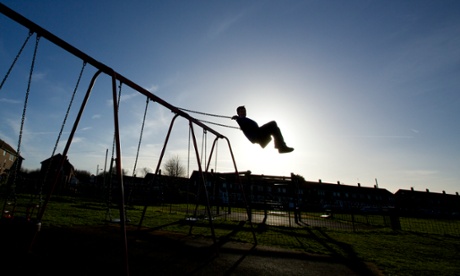
Children as young as eight can experience dissatisfaction with the size and shape of their body that puts them at risk of eating disorders in their teens, according to a major study which for the first time reveals how early anxieties about body image set in.
The largest UK study ever on eating disorders in children followed 6,000 kids to the age of 14. It finds that self-esteem in eight-year-olds is one of the critical predictive factors for problems in the teens.
The results shocked the researchers. “When I started the study, I wouldn’t have thought so many boys and girls might be unhappy about their bodies at such a young age,” said lead author Nadia Micali, based at the UCL Institute of Child Health in London – the research arm of Great Ormond Street hospital – and the Icahn medical school at Mount Sinai hospital in New York.
“It is really worrying because imagine eight-year-olds now – it would be much worse. My impression is that girls and boys are growing up faster every year almost. They are more mature and faced with issues they probably shouldn’t be faced with so early,” she said.
At the age of eight, 5% of girls and 3% of boys in the study were dissatisfied with their body, which rose with age until, at 14, 32.3% of girls and 16% of boys were “moderately dissatisfied” with at least part of it. At that age, 38.8% of the girls and 12.2% of the boys were involved in what the study calls eating disorder behaviours. A further 7.5% of girls and 3.5% of boys were binge eaters.
The study, which is a collaboration between Micali and partners at the London School of Hygiene and Tropical Medicine, Kings College London and Harvard, found a significant difference between boys and girls. Girls with low self-esteem could develop an eating disorder whether or not they were overweight. Among boys, it was only the overweight or obese who went on to diet or binge eat as they reached their teens.
That means those who want to help children avoid eating disorders in adolescence will have to consider tackling the issues in childhood and tailor their messages differently, said Micali. And with nationwide concern about rising levels of obesity in children – who are now all weighed in primary school – they must be careful what those children are told.
“With obesity prevention programmes, children in primary schools are given healthy eating classes without even thinking what they might mean. Many of those classes have not been tested as scientists might test them,” she said. There was a risk, she said, that in warning children about becoming overweight, they might be pushed in the opposite direction.
In 2012, an all-party parliamentary group on body image recommended the introduction of mandatory lessons on body image in primary and secondary schools. Many schools took up the challenge. But this study, said Micali, questions the wisdom of a blanket approach for younger children.
“You have to think about who you target. Do you tell all boys and girls that they shouldn’t worry about their bodies or do you do it for children at risk? Maybe boys and girls should be treated differently. There are a lot of unknowns that policymakers should think about before starting something like the body image classes that were introduced in UK schools,” she said.
The study, published in the British Journal of Psychiatry, used data from the Avon Longitudinal Study of Parents and Children (ALSPAC) which invited all pregnant women expected to deliver between April 1991 and December 1992 to take part. Nearly 14,000 children were alive and enrolled in the study by the age of one. For the eating disorders research, 6,140 took part.
Using a scale to assess self-esteem, the researchers found higher scores at 8.5 years had a protective effect against developing body dissatisfaction and eating disorder behaviours as a teenager. A one-point increase in the self-esteem scale at that age decreased boys’ odds of engaging in self-induced vomiting or laxative use for weight loss at 14 by 19%.
About a fifth of the 14-year-old girls said they felt under pressure from the media to lose weight. Considering the finding that body dissatisfaction can begin in childhood, the researchers wrote: “This suggests that contrary to previous reports, some children [vulnerable because of early body dissatisfaction and higher weight] might be more vulnerable to feeling under pressure from media, family and peers.”
Lorna Garner, chief operating officer of the eating disorders charity Beat, said the study offered fascinating feedback: “It is evidence that one of the causes or contributing factors towards an eating disorder or something that could trigger an eating disorder is the whole thing around body image and self-esteem. It doesn’t cause it, but it could be a large influencing factor. It is almost as though seeds that are sown pre-teens come to fruition later.
“Knowing that is incredibly helpful because it gives everybody who is involved with wanting to prevent and manage eating disorders an indication that we need to start earlier.”
Body image has never been the only trigger for eating disorders, she said. There have to be other underlying problems. “I grew up in the Twiggy era, of Biba and Mary Quant and stick-thin legs. None of my friends had a feeling of good body image at all, but it didn’t mean we all had an eating disorder. An eating disorder is a serious mental illness.”

